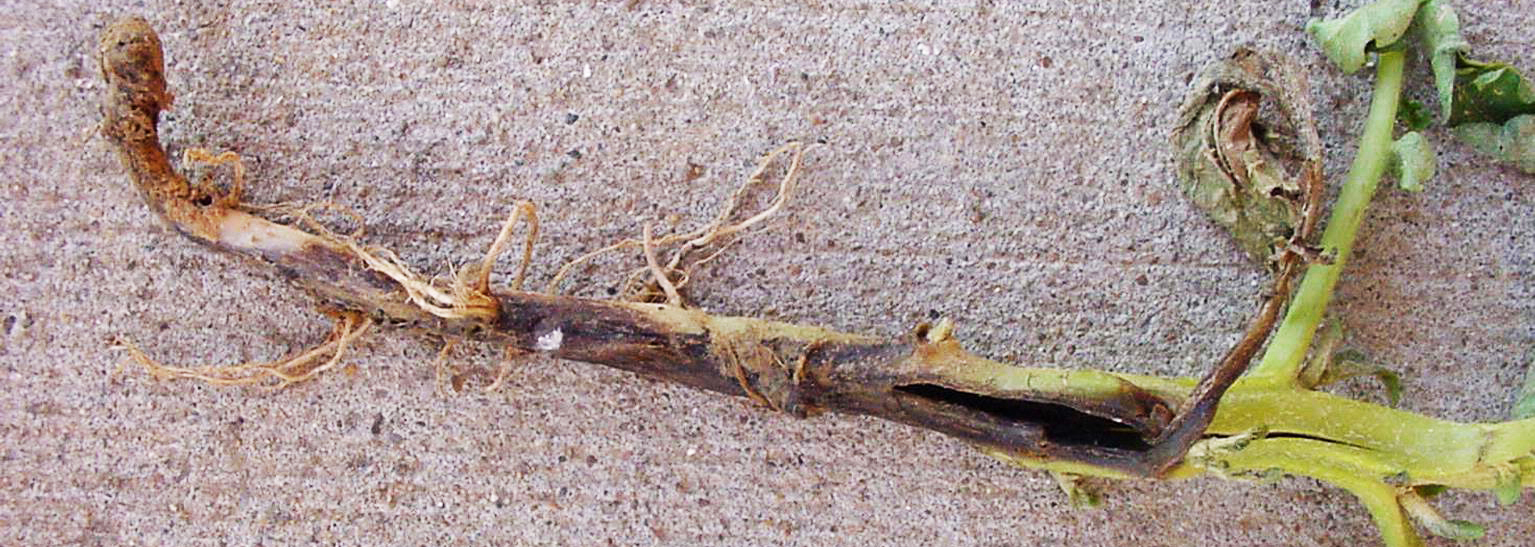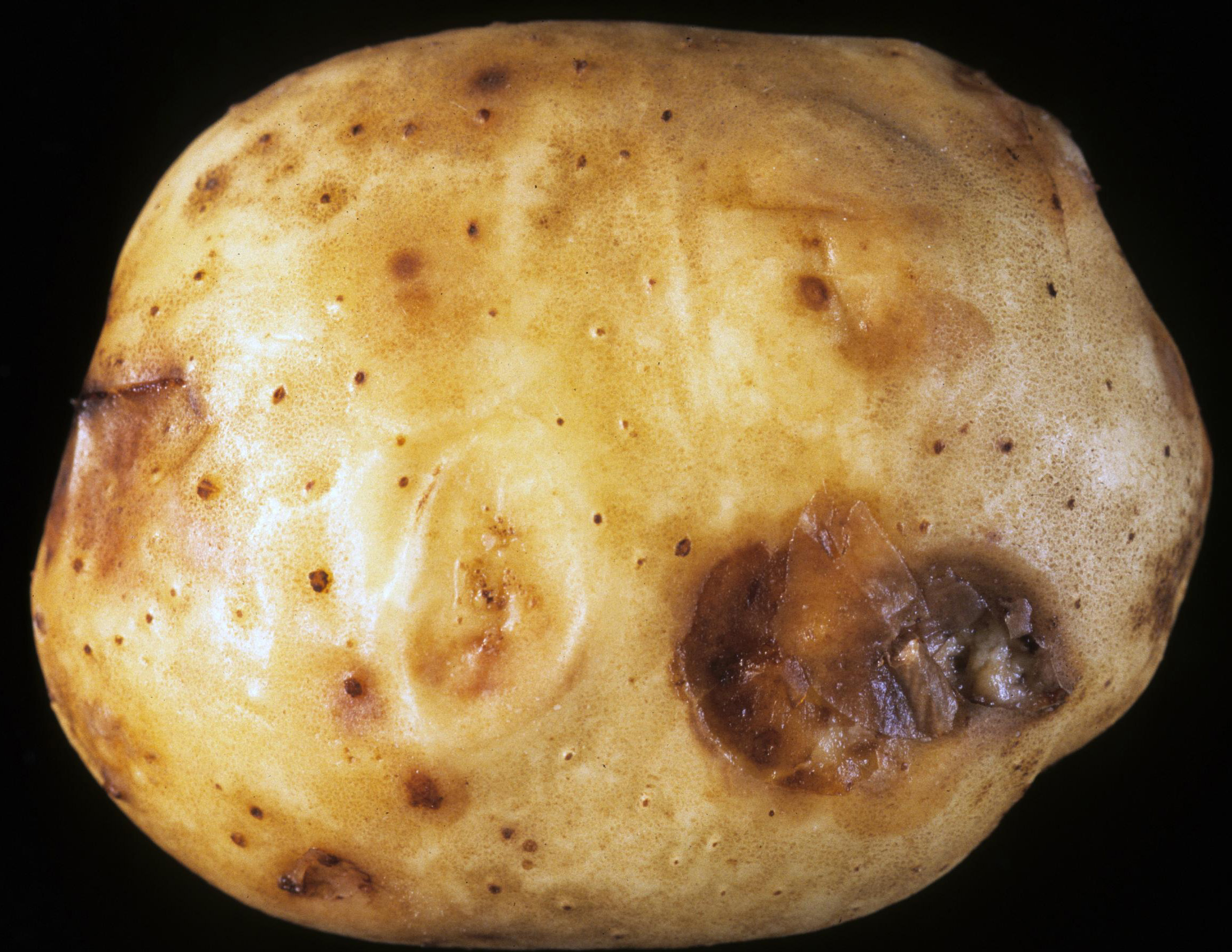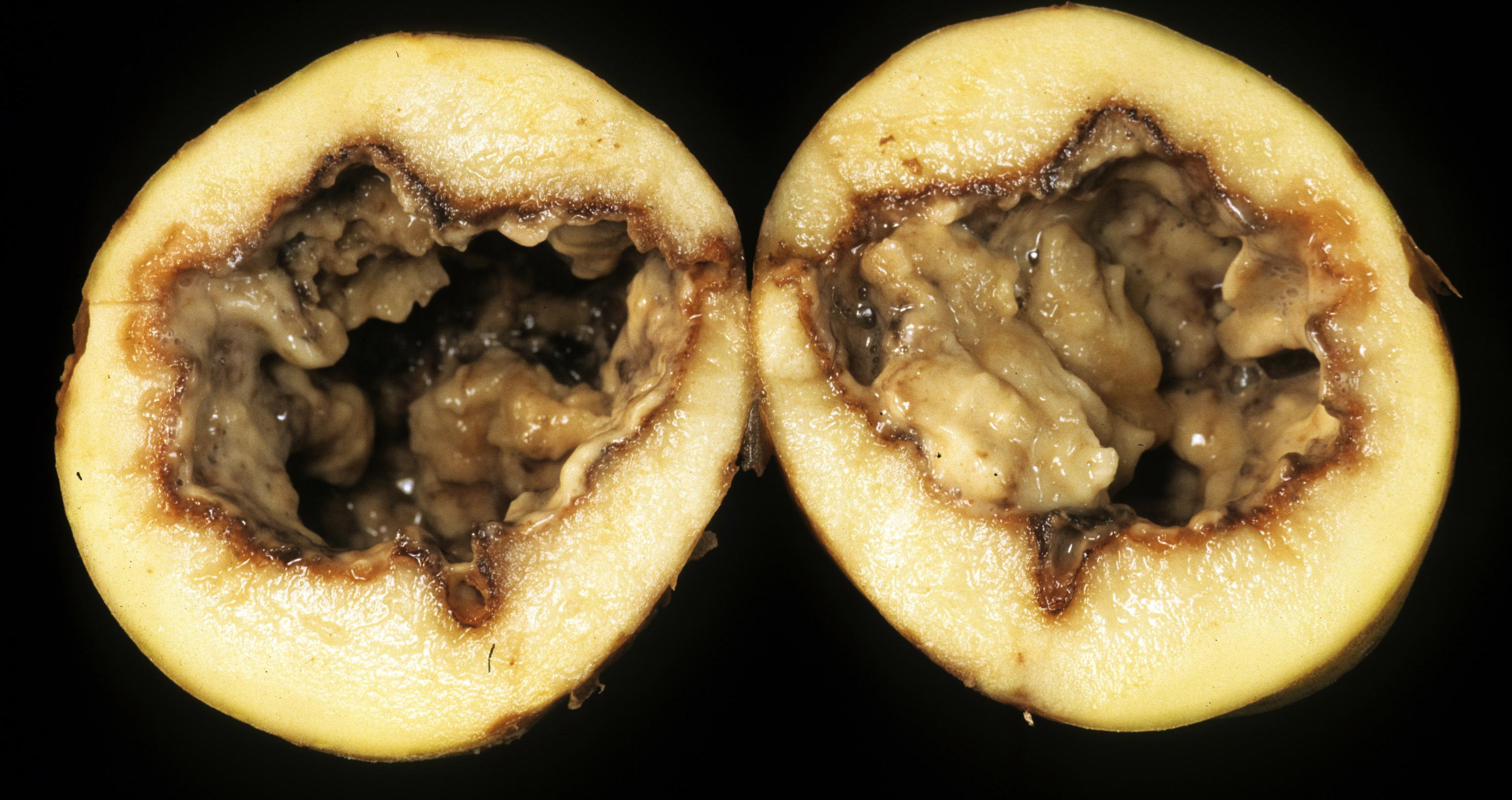Black Leg of Potato
Return to Diseases
Black leg (Erwinia carotovora) infections most often occur after plants have emerged; however, disease can also occur in seed pieces, preventing them from sprouting. On plants, a black to brown decay extends from the seed piece to several inches or more aboveground. Infected tubers can rot in storage (bacterial soft rot phase). The bacterium can survive in infected seed pieces, leading to the development of black leg in a subsequent crop. High temperatures and wet soils greatly increase the risk of black leg.

Black leg.
(Photo: Paul Bachi, University of Kentucky)

Bacterial soft rot.
(Photo: Gerald Holmes, Strawberry Center, Cal Poly San Luis Obispo, Bugwood.org)

Bacterial soft rot.
(Photo: Gerald Holmes, Strawberry Center, Cal Poly San Luis Obispo, Bugwood.org)
Management:
- Plant only pathogen-free seed pieces
- Avoid planting potatoes in fields with a history of black leg
- Do not over-irrigate
- Promptly destroy crop residues after harvest
- Deep plow to bury residual inoculum
